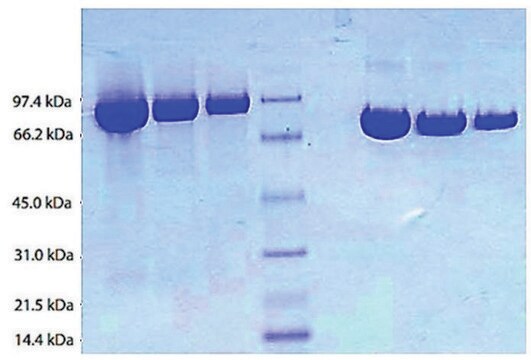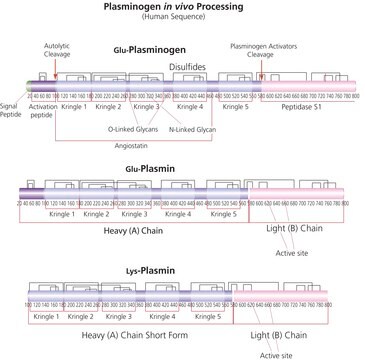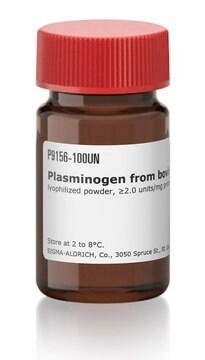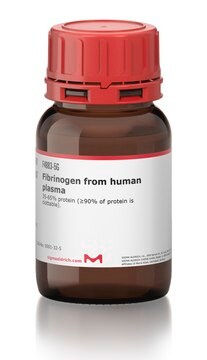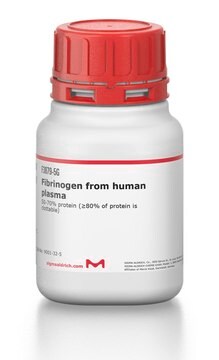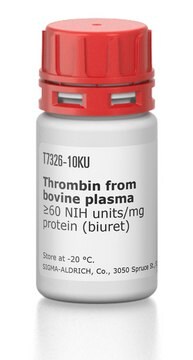10874477001
Roche
Plasminogen
from human serum
Sinonimo/i:
plasminogen
About This Item
Prodotti consigliati
Origine biologica
human serum
Livello qualitativo
Forma fisica
lyophilized
Attività specifica
~11 units/mg protein (activated with streptokinase at 37 °C and pH 7.4 with Chromozym PL as the substrate.)
PM
90-94 kDa
Confezionamento
pkg of 20 U
Produttore/marchio commerciale
Roche
tecniche
activity assay: suitable
applicazioni
life science and biopharma
Condizioni di spedizione
wet ice
Descrizione generale
Applicazioni
Caratteristiche e vantaggi
Lyophilizate, stabilized with bovine serum albumin.
Qualità
Sequenza
Nota sulla preparazione
Working solution: Solvent is recommended in 20 mM sodium phosphate buffer, pH 7.5, 100 mM NaCl.
Storage conditions (working solution): -15 to -25 °C
A solution in 20 mM sodium phosphate buffer, pH ca. 7.5, 100 mM NaCl is stable for several months without loss of activity when stored at -15 to -25 °C.
Note:
Plasminogen is susceptible to autolysis, which may result in activation. Contact with the skin or other contamination (e.g., by microorganisms), is therefore to be avoided.
Stoccaggio e stabilità
Altre note
Avvertenze
Warning
Indicazioni di pericolo
Consigli di prudenza
Classi di pericolo
STOT RE 2
Codice della classe di stoccaggio
11 - Combustible Solids
Classe di pericolosità dell'acqua (WGK)
WGK 2
Punto d’infiammabilità (°F)
does not flash
Punto d’infiammabilità (°C)
does not flash
Certificati d'analisi (COA)
Cerca il Certificati d'analisi (COA) digitando il numero di lotto/batch corrispondente. I numeri di lotto o di batch sono stampati sull'etichetta dei prodotti dopo la parola ‘Lotto’ o ‘Batch’.
Possiedi già questo prodotto?
I documenti relativi ai prodotti acquistati recentemente sono disponibili nell’Archivio dei documenti.
I clienti hanno visto anche
Il team dei nostri ricercatori vanta grande esperienza in tutte le aree della ricerca quali Life Science, scienza dei materiali, sintesi chimica, cromatografia, discipline analitiche, ecc..
Contatta l'Assistenza Tecnica.